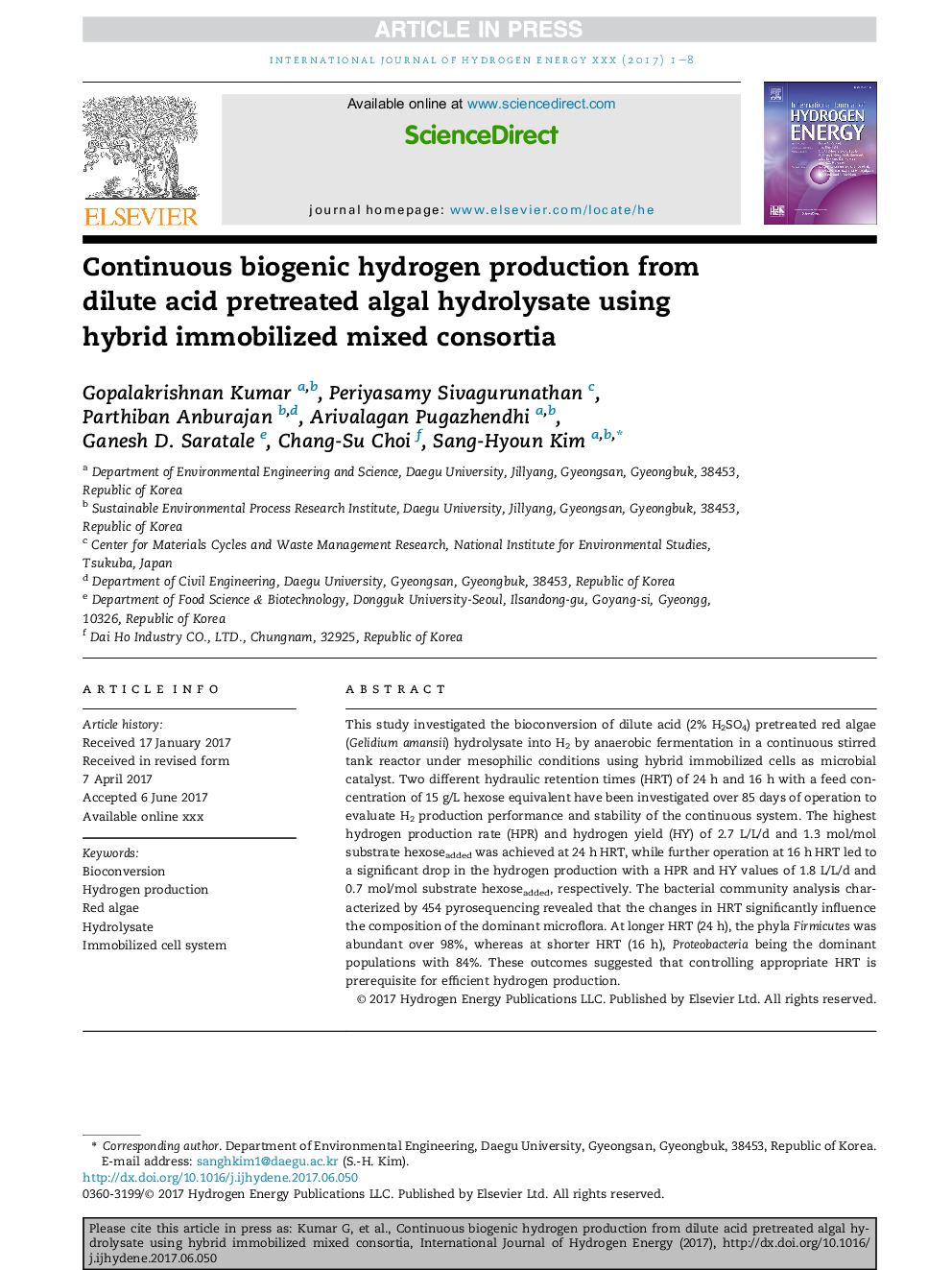| Article ID | Journal | Published Year | Pages | File Type |
|---|---|---|---|---|
| 7705652 | International Journal of Hydrogen Energy | 2018 | 8 Pages |
Abstract
This study investigated the bioconversion of dilute acid (2% H2SO4) pretreated red algae (Gelidium amansii) hydrolysate into H2 by anaerobic fermentation in a continuous stirred tank reactor under mesophilic conditions using hybrid immobilized cells as microbial catalyst. Two different hydraulic retention times (HRT) of 24Â h and 16Â h with a feed concentration of 15Â g/L hexose equivalent have been investigated over 85 days of operation to evaluate H2 production performance and stability of the continuous system. The highest hydrogen production rate (HPR) and hydrogen yield (HY) of 2.7Â L/L/d and 1.3Â mol/mol substrate hexoseadded was achieved at 24Â h HRT, while further operation at 16Â h HRT led to a significant drop in the hydrogen production with a HPR and HY values of 1.8Â L/L/d and 0.7Â mol/mol substrate hexoseadded, respectively. The bacterial community analysis characterized by 454 pyrosequencing revealed that the changes in HRT significantly influence the composition of the dominant microflora. At longer HRT (24Â h), the phyla Firmicutes was abundant over 98%, whereas at shorter HRT (16Â h), Proteobacteria being the dominant populations with 84%. These outcomes suggested that controlling appropriate HRT is prerequisite for efficient hydrogen production.
Related Topics
Physical Sciences and Engineering
Chemistry
Electrochemistry
Authors
Gopalakrishnan Kumar, Periyasamy Sivagurunathan, Parthiban Anburajan, Arivalagan Pugazhendhi, Ganesh D. Saratale, Chang-Su Choi, Sang-Hyoun Kim,
